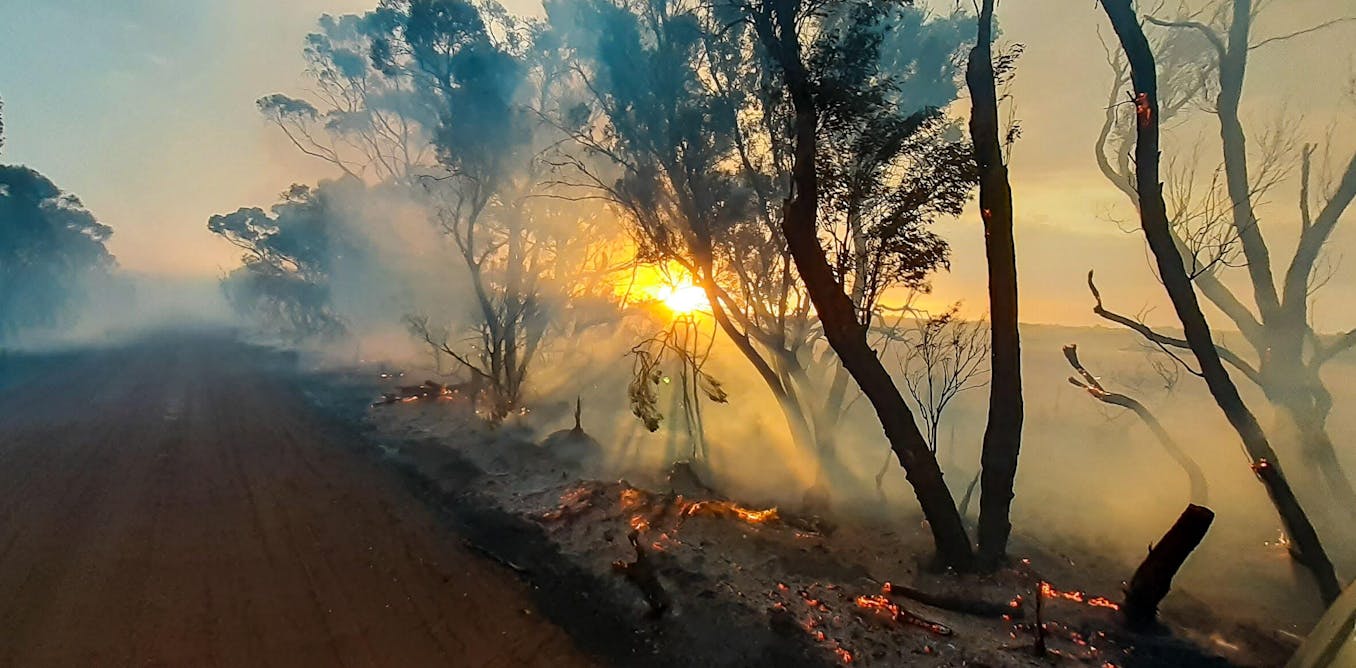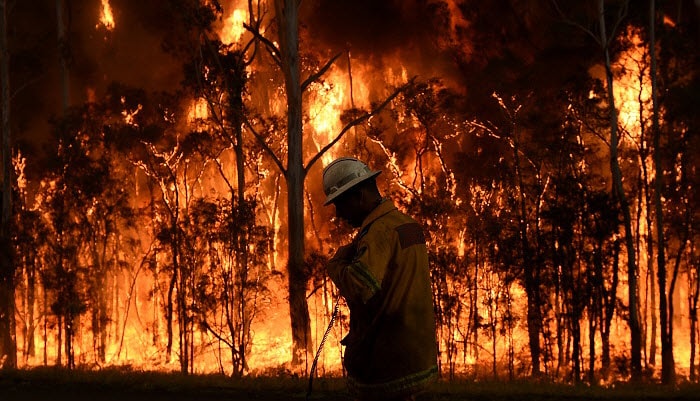Bushfire Risk Assessment Demystified: Exactly How to Interpret and Act Upon Your Outcomes
Bushfire Risk Assessment Demystified: Exactly How to Interpret and Act Upon Your Outcomes
Blog Article
Important Tips for Bushfire Management to Make Certain Fire Security

Comprehending Bushfire Danger Levels
Recognizing the varying degrees of bushfire risk is important for reliable preparation and prep work in mitigating prospective risks to properties and lives. Bushfire risk degrees are normally categorized based upon variables such as weather problems, fuel schedule, topography, and historic fire habits. By understanding these danger communities, levels and individuals can proactively execute approaches to reduce vulnerability and boost durability in the face of possible bushfire events.
The first level of bushfire risk is reduced danger, where the likelihood of a bushfire taking place and creating significant harm is minimal. This degree typically happens during periods of reduced temperature levels, moderate moisture, and very little wind speeds. Moderate danger levels show a raised capacity for bushfires due to rising weather or fuel accessibility. High-risk degrees signify a considerable danger, with conditions helpful to fast fire spread and extreme fire behavior. Severe risk degrees are one of the most critical, presenting brewing risk to lives and residential properties as a result of extreme weather and very combustible fuels.
Recognizing these bushfire risk levels allows stakeholders to customize their preparedness and action activities as necessary, guaranteeing a aggressive and effective approach to bushfire administration.
Developing a Defensible Area
Efficient bushfire monitoring starts with developing a defensible space around residential properties to boost security versus possible fire threats. A defensible area is a barrier zone that creates a barrier between a structure and the bordering combustible plants. This space functions as a critical line of protection, giving firemens a safe area to operate and assisting to lower the threat of a fire spreading to the home.
When establishing a defensible space, it is vital to think about the layout of the residential or commercial property and the bordering landscape. Cleaning plants, particularly highly flammable plants, within a particular radius of the property can aid protect against the rapid spread of fires. In addition, preserving a well-irrigated area around the building can further improve its defensibility.
Regular maintenance of the defensible space is crucial to guarantee its efficiency. This includes cutting looming branches, removing dead plants, and keeping the area devoid of particles. By investing time and initiative right into developing and maintaining a defensible space, residential property proprietors can substantially enhance their chances of shielding their homes and possessions throughout a bushfire.
Applying Fire-Resistant Landscape Design
When developing landscapes to alleviate the danger of bushfires, including fireproof elements is vital for improving property defense and lowering fire threats. Select plants with high moisture content, low oil content, and minimal dead vegetation to decrease the risk of fire spread.

Producing an Emergency Emptying Plan
Creating an extensive emergency discharge plan see post is essential for making certain the safety and security and health of individuals throughout possible bushfire events (BMP). An effective discharge strategy must detail clear treatments to follow in the event of a bushfire hazard, consisting of assigned emptying routes, setting up factors, and interaction methods
To begin producing an emergency emptying strategy, it is essential to assess the certain risks and susceptabilities of your place. Recognize multiple discharge routes that result in safe areas far from the fire, taking into consideration variables such as surface, roadway access, and possible risks. Develop communication networks to sharp residents of an upcoming emptying, utilizing techniques such as sirens, text notifies, or door-to-door alerts.
Consistently testimonial and exercise the evacuation strategy with all citizens or area participants to make sure everybody understands their roles and duties. Conduct drills to check the efficiency of the plan and make any kind of required changes. By having a well-prepared discharge plan in position, you can improve the possibilities of a safe and orderly evacuation during a bushfire emergency.
Preserving Fire Safety And Security Tools
After developing a comprehensive emergency situation evacuation prepare for bushfire occurrences, it is important to prioritize the regular upkeep of fire safety and security devices to make sure optimum capability and readiness. Normal maintenance of fire security equipment such as fire extinguishers, smoke detectors, fire alarms, and lawn sprinkler systems is important in protecting lives and residential property throughout a bushfire. Conducting regular assessments, testing, and maintenance of these gadgets by qualified specialists is necessary to guarantee they remain in working order when required.
Fire extinguishers ought to be examined consistently for pressure degrees, visible damages, and correct capability. Smoke alarm should have their batteries replaced at the very least annually and go through month-to-month testing to guarantee they are operational. Smoke alarm and automatic sprinkler must be inspected regularly to verify they are connected and functioning appropriately. Furthermore, it is essential to keep fire safety and security equipment obtainable, unblocked, and plainly classified for very easy recognition throughout an emergency. By vigilantly maintaining fire safety and security tools, individuals can enhance their readiness and feedback abilities in the event of a bushfire.
Verdict
Finally, reliable bushfire administration entails comprehending danger degrees, creating defensible spaces, implementing fire-resistant landscaping, creating emptying plans, and preserving fire security devices. By following these vital ideas, individuals can make sure much better fire defense and security for redirected here their areas and properties. It is essential to prioritize positive measures to reduce the threats related to bushfires and to be planned for emergencies.
By comprehending the nuances of bushfire threat levels, creating defensible rooms, applying fireproof landscaping, producing detailed discharge plans, and ensuring the upkeep of fire safety tools, communities and people can substantially bolster their resilience against the devastations of wildfires - BMP. These pointers are not only essential for guarding against immediate fire dangers but additionally for promoting long-term fire protection approaches that can make have a peek at this website a significant distinction in the face of intensifying bushfire threats
Risky degrees indicate a substantial risk, with conditions favorable to rapid fire spread and extreme fire habits. Routine maintenance of fire safety and security equipment such as fire extinguishers, smoke detectors, fire alarms, and sprinkler systems is critical in guarding lives and residential property during a bushfire.In final thought, reliable bushfire monitoring involves understanding danger degrees, developing defensible rooms, carrying out fireproof landscaping, establishing discharge strategies, and preserving fire safety and security tools.
Report this page